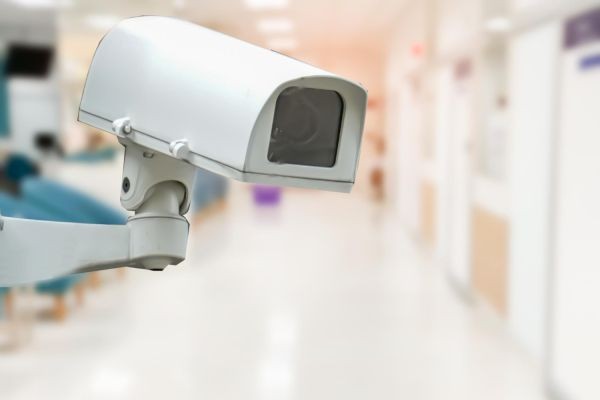Have you ever wondered how critical moments in medical diagnostics or high-stakes surveillance are captured with such precision, even in less-than-ideal conditions? The answer often lies in a game-changing innovation: Optical Image Stabilization OIS cameras. Whether it's minimizing blur during a high-pressure medical procedure or ensuring clear visuals in a dynamic surveillance scenario, OIS cameras are transforming outcomes by addressing long-standing challenges.
Addressing the Challenges in Medical Diagnostics and Surveillance
Precision is the cornerstone of both medical diagnostics and surveillance. In these fields, even a slight deviation or distortion can lead to significant consequences. For example:
-
Medical Diagnostics: Imaging tools like endoscopes or diagnostic scanners rely heavily on stable visuals to detect abnormalities. Yet, factors like patient movement or unsteady hands of medical professionals can compromise clarity.
-
Surveillance: In scenarios such as monitoring public spaces or securing critical infrastructure, motion blur caused by vibrations, wind, or handheld operation can hinder threat identification and timely action.
These challenges create a pressing need for technology that ensures stability and clarity, no matter the conditions. This is where OIS cameras excel.
What Makes OIS Cameras Unique?
OIS cameras stand apart by employing gyroscopes and accelerometers to detect and counteract motion. Unlike traditional cameras, which might rely solely on software corrections, OIS cameras use hardware mechanisms to adjust the camera lens or sensor physically. This real-time correction ensures that even in shaky environments, images and videos remain sharp and usable.
Key Features of OIS Cameras
-
Motion Compensation: By detecting and correcting movement instantaneously, OIS cameras eliminate blur caused by camera shake.
-
Low-Light Performance: Stability is maintained even in dim environments, making these cameras invaluable for night-time surveillance or poorly lit diagnostic areas.
-
Enhanced Zoom Clarity: High zoom levels often magnify motion. OIS technology ensures clear details even at extreme zooms.
-
Seamless Integration: Compact and adaptable, OIS cameras can be integrated into various devices, from medical imaging tools to handheld surveillance equipment.
The Benefits of OIS Cameras in Medical Diagnostics
Medical professionals often face the challenge of capturing detailed imagery in unpredictable circumstances. Here's how OIS cameras are addressing these pain points:
Improving Diagnostic Accuracy
In applications such as ultrasound, endoscopy, or ophthalmic imaging, precision is paramount. OIS cameras provide the stability required to:
-
Capture fine details, enabling early and accurate diagnoses.
-
Reduce retakes, which can be stressful for patients and waste time.
-
Enhance the reliability of portable diagnostic devices used in remote or emergency settings.
Empowering Surgical Procedures
Surgeons often rely on camera-guided tools for minimally invasive procedures. Motion stabilization ensures:
-
Clear visuals despite hand tremors or patient movement.
-
Reduced reliance on multiple assistants for steadying equipment.
-
Enhanced confidence during intricate surgeries where precision is critical.
Supporting Telemedicine
Telemedicine has become a cornerstone of modern healthcare, allowing patients and doctors to connect remotely. OIS cameras improve telemedical consultations by:
-
Delivering sharp, real-time visuals even if the device is handheld.
-
Facilitating the use of diagnostic attachments, such as digital otoscopes or dermatoscopes.
-
Reducing the need for high-cost stationary equipment.
Revolutionizing Surveillance with OIS Cameras
Surveillance operators demand clarity to identify and act upon threats promptly. OIS cameras offer unmatched advantages for both public and private security:
Clear Footage in Dynamic Environments
Surveillance in crowded or high-motion settings, such as stadiums or transportation hubs, is challenging. OIS cameras mitigate motion blur caused by:
-
Vibrations from mounted cameras on vehicles or drones.
-
Handheld operations during active monitoring.
-
Sudden movements in the environment.
Enhanced Performance in Low Light
Many surveillance scenarios occur at night or in dim conditions. OIS technology ensures that images remain crisp even when:
-
Utilizing long exposure times for better light capture.
-
Monitoring spaces with uneven lighting, such as parking lots or alleys.
Versatility Across Platforms
From wearable body cameras used by law enforcement to aerial drones monitoring large areas, OIS cameras deliver:
-
Superior stability, regardless of the mounting platform.
-
Reliable performance in both urban and remote settings.
-
Integration with analytics software for real-time threat detection.
Choosing the Right OIS Camera for Your Needs
Not all OIS cameras are created equal. When selecting a solution for medical diagnostics or surveillance, consider:
-
Resolution: Higher resolutions provide more detailed imagery, critical for diagnostics and identification in surveillance.
-
Form Factor: Compact designs are ideal for integration into handheld or portable devices.
-
Environmental Durability: Cameras designed to withstand vibrations, dust, and moisture are better suited for challenging conditions.
-
Integration Capabilities: Ensure compatibility with existing equipment and software systems.
Transforming Outcomes with OIS Cameras
OIS cameras are more than just a technological upgrade; they are enablers of precision and reliability. By addressing the pain points of motion blur, low-light performance, and environmental instability, these cameras empower professionals to:
-
Make faster, more accurate decisions in medical diagnostics.
-
Strengthen security measures with dependable surveillance footage.
-
Expand the reach of technology to remote or mobile applications.
Whether you're a healthcare provider seeking better diagnostic tools or a security professional aiming for clearer visuals, investing in OIS cameras can redefine your operational capabilities.


